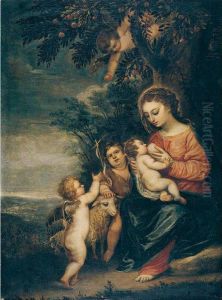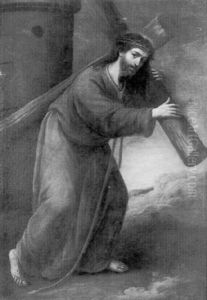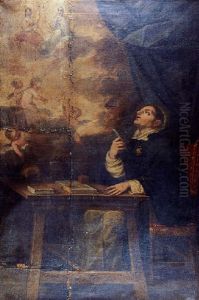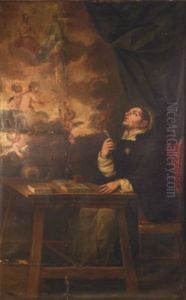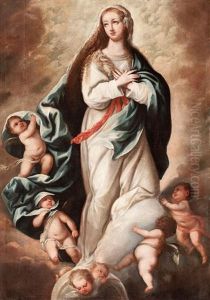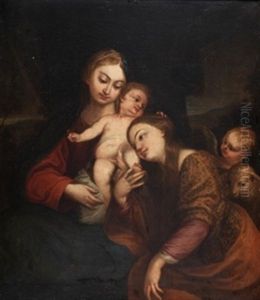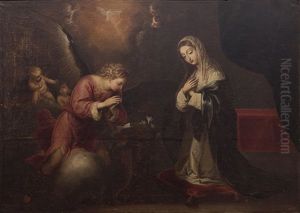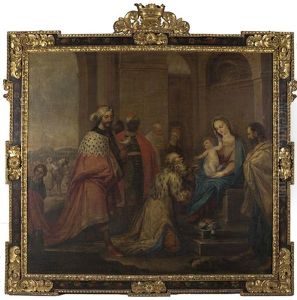Pedro Anastasio Bocanegra Paintings
Pedro Anastasio Bocanegra was a notable Spanish painter born in Granada in 1638. He emerged as a significant figure in the Spanish Baroque painting scene, primarily active during the 17th century, a period known for its dramatic expression and elaborate style. Bocanegra's work is characterized by its religious themes, a common focus among artists of his time, reflecting the deep spiritual and ecclesiastical influences in Spain during the Counter-Reformation.
Bocanegra was initially trained by his uncle, Alonso Cano, a renowned painter, architect, and sculptor of the Spanish Baroque period. This mentorship played a crucial role in shaping his artistic direction and style, blending the influence of his uncle's elegance and compositional balance with his own unique expression. Throughout his career, Bocanegra's art was deeply influenced by other prominent artists of his era, including Zurbarán and Murillo, which is evident in his adept use of chiaroscuro and the tender representation of religious figures.
He is best known for his work in religious commissions for churches and convents, which include altarpieces, frescoes, and other devotional paintings. Among his notable works is the 'St. Bernardine of Siena Preaching before Alfonso V of Aragon', which showcases his skill in depicting religious fervor and sanctity. This painting, like many of his works, highlights his ability to convey deep spiritual narratives through the interplay of light, shadow, and color.
Despite his considerable talents and contributions to the Spanish Baroque movement, Bocanegra's work was somewhat overshadowed by his contemporaries and, to a degree, his mentor, Alonso Cano. Nevertheless, his paintings remain significant for their emotional depth and technical proficiency, capturing the essence of Spanish spirituality and baroque aesthetics.
Pedro Anastasio Bocanegra passed away in Granada in 1688. His legacy, though not as widely recognized as some of his peers, continues to be appreciated by art historians and enthusiasts for its contribution to the rich tapestry of Spanish art history. His works are preserved in various institutions and collections, serving as a testament to his skill and dedication to his craft.









